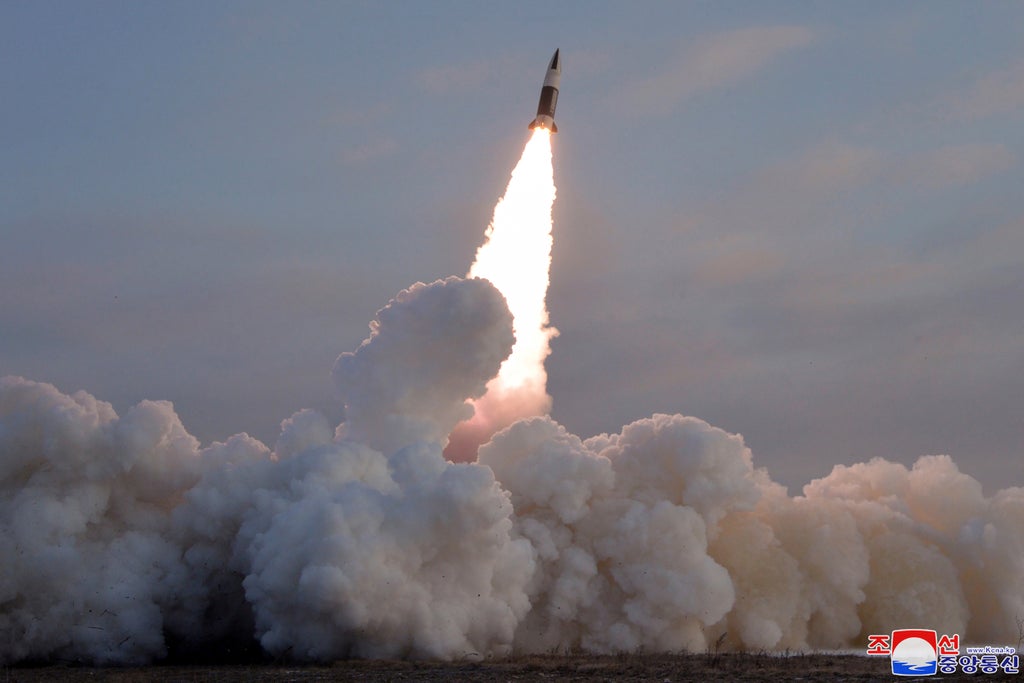
North Korea said Tuesday it had conducted a test-firing of “tactical guided missiles,” a day after South Korea’s military detected the North launching two ballistic missiles into the sea.
Monday’s test was North Korea’s fourth round of missile launches this month and the second since its Foreign Ministry warned of stronger and more explicit action after the Biden administration last week imposed fresh sanctions over the North's continued weapons displays.
Some experts say North Korean leader Kim Jong Un is reviving Pyongyang’s old playbook of brinkmanship to extract concessions from Washington and neighbors as he grapples with a broken economy and pandemic-related difficulties. The economic setbacks have left Kim with little to show for his diplomatic efforts with the U.S., which derailed in 2019 after the Americans rejected North Korea’s demands for major sanctions relief in exchange for a partial surrender of its nuclear capabilities.
North Korea’s official Korean Central News Agency said the test was aimed to evaluate the missiles that were already being manufactured and deployed. KCNA said missiles “precisely” struck a sea target to confirm the system’s “accuracy, security and efficiency.”
The report didn’t specify what the missiles were. Kim Dong-yub, a professor at Seoul’s University of North Korean Studies, said state media photos suggest the North tested a short-range weapon that looks similar in appearance with the U.S. MGM-140 Army Tactical Missile System.
First tested in 2019, the missile is part of North Korea’s expanding short-range weaponry that experts say are aimed at overwhelming missile defenses in North Asia. Its missile launches on Friday were of another short-range weapon apparently modeled after the Russian Iskander mobile ballistic system.
These missiles, which are potentially nuclear-capable, are designed to be maneuverable and fly at low altitudes, theoretically giving them a better chance at evading and defeating missile defense systems.
Park Won Gon, a professor at Seoul’s Ewha Womans University, said the North’s development and mass production of these short-range weapons are a key part of the country’s efforts to cement its status as a nuclear power in hopes of wresting badly needed economic concessions from rivals.
The North has so far rejected the Biden administration’s open-ended offers to resume talks, saying that Washington must first abandon what Pyongyang perceives as “hostile” policies.
Even if negotiations resume, it could be impossible to entirely remove all the short-range weapons North Korea has already produced. Kim Jong Un is clearly trying to convert the diplomacy with Washington into an arms-reduction negotiation between nuclear states and rejecting any process that would culminate in a unilateral surrender of weapons he sees as his strongest guarantee of survival, Park said.
Last week, the U.S. Treasury Department imposed sanctions on five North Koreans over their roles in obtaining equipment and technology for the North’s missile programs in response to North Korea’s earlier tests of a purported hypersonic missile.
The State Department ordered sanctions against another North Korean, a Russian man and a Russian company for their broader support of North Korea’s weapons of mass destruction activities. The Biden administration also said it would pursue additional U.N. sanctions over the North’s continued tests.







